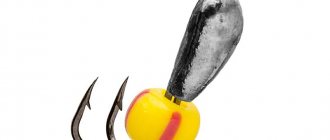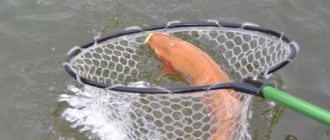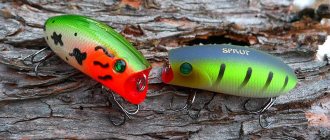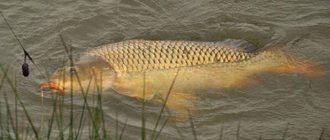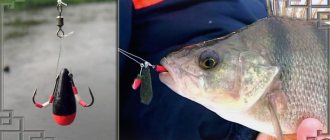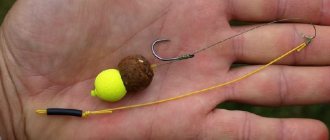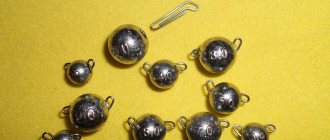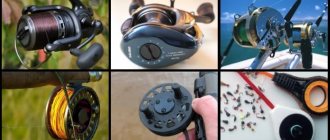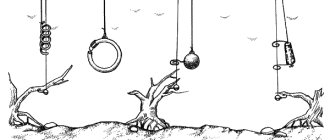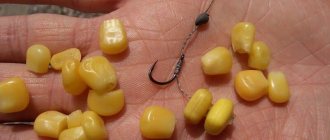Silicone bait has firmly established itself in the arsenals of spinning anglers, having proven itself to be a reliable and effective tool for catching all types of predatory fish. Recently, in addition to fans of spinning rods, fishermen who practice the float and bottom methods of catching peaceful fish have become interested in silicone. Silicone models have appeared on sale that realistically imitate movements and convey the smell of real baits that attract carp species of fish.
Using artificial bloodworms or maggots when fishing, and even rubber corn grains is already commonplace, which will not surprise most of our fishermen. The types of silicone baits are amazingly diverse, and therefore expand your fishing possibilities. Low cost, but real effectiveness of use contributes to the popularization of attachments, which is undoubtedly worth using. And how to competently understand the variety of silicone attachments, the article presented below will help the reader.
Silicone classification
To better understand the capabilities and purpose of the product, silicone baits are classified according to a number of basic qualities. Classification helps to quickly select the right bait options for certain fishing conditions, which are included in the development of strategies and tactics for the upcoming fishing. Silicone manufacturers pay important attention to such aspects of the product as its shape, size and color spectrum of the product. Based on these features of the simulators, it is quite easy to decide for what type of fishing the bait is suitable and what type of fish is the target for using silicone. In continuation of the article, we will delve into these main features in more detail, having understood which the angler can always make the right choice of the bait he needs for his planned fishing.
By shape
The most common forms of attachments currently are twisters and vibrating tails. Worms, slugs, creatures and frogs are slightly less popular, but in terms of fishing efficiency they are almost as good as the aforementioned silicone fish.
Vibrotails are completely similar to small fish. The oblong body ends in a tail, reminiscent of a horse's hoof, which has its own play with any type of wiring.
Vibrating tails and twisters
A twister is a simulator with a cylindrical main body ending in a crescent-shaped ribbon tail, sometimes significantly larger than the size of the bait body itself. Twisters are similar to a fish fry or a large insect larva. Just like vibrating tails, they have their own game.
Worms are realistic silicone replicas of dung worms, earthworms, earthworms, and crawlers. To a greater extent, these are passive baits that require animation during wiring.
Slugs are forms of bait with the body of a fish or a worm. A distinctive feature of these types is the narrowing of the tail into a thin cord-like element without any kind of thickening. Slugs do not have their own game.
Worms and Slugs
Creatures or so-called fantasy forms in their appearance resemble small underwater inhabitants from the world of insects or crustaceans. They cannot always imitate the real essence of a real food item, being a creative invention - a fantasy from the manufacturer.
Frogs are imitations of a real amphibian, differing in subspecies into products with legs and baits in which the hind limbs are replaced with silicone fringe. Simulators with paws have the ability to play their own game. Frog bodies with silicone hairs need forced animation.
Silicone frog
Types of color solutions
Fishing with silicone baits is successful due to the varied colors of the products, which have a wide spectral range. Silicone is quite easy to color, so you can find the product on sale in natural colors and exotic colors. Thus, manipulations with color selection make it possible to fish in water with varying degrees of transparency, and also contribute to the selection of baits for hunting in different weather and time of day, despite the variability and intensity of natural light.
Based on the brightness of the color, silicone can be selected for fishing at different depths. The most common are light green or acidic colors, brown or machine oil color, carrot, bright orange or intense red color. All types of paints can be supplemented with inclusions of fluorescent elements or sparkles that increase the fish’s interest in the bait, to which a hunting object such as perch responds best.
To size
Silicone sizes are suitable for all types of spinning fishing. So, with the smallest baits you can hunt with ultralight for microjigs. Such silicones have sizes from 0.5 to 1.5 inches. Most often, baits in sizes from 2 to 9 inches are used for spinning fishing.
In trolling fishing, large silicone fishing baits are used, the size of which exceeds 10-12 inches. Based on the size of the simulator, a jig head and hook of suitable weight are selected for installation. At depths of up to three meters in standing waters, silicone in the size of 2–4 inches with a load weight of 6–8 grams is suitable, and in currents the load is increased to 10–12 grams. A five-inch bait under the conditions described above on a reservoir is equipped with a load of 10 grams and 12–14 grams in the current. A 7-inch simulator is accordingly supplemented with a sinker of 12 grams in calm water, and about 15 grams in currents. As a rule, the size of the hook should not be more than 1/2 the length of the bait being equipped.
Classification
In terms of quantity, range of colors, shape and variety of sizes, silicone baits can easily compete with the toys presented in the best stores for children. Therefore, it is useful to know how and by what characteristics this bait differs. All of them are classified based on shape, size and color.
By shape
Its most popular types, depending on the form , are:
- twisters;
- vibrotails;
- worms;
- slugs;
- frogs;
- creatures.
Twisters have a cylindrical body with a flat and soft crescent-shaped tail. Sometimes they are found with multiple tails. The body shape often has a ribbed or wavy surface. From afar, it shares some similarities with larvae. Its action is based on active play, resulting in vibration of the tail, affecting the lateral line of the fish.
Vibrating tails are very reminiscent of a small fish with a specific flat-shaped tail, always located perpendicular to the main axis of the bait. The transverse angle of the tail may differ depending on the model, which adds variety to the game.
Silicone worms very realistically copy attachments in the form of their natural counterparts. The vast majority of their varieties are classified as passive baits , but recently variants with soft tails have appeared that play when fishing with different intensities.
Slugs are a silicone imitation of a flat small fish or a large worm with its tail already torn off. They do not have their own game and are not intended for wiring, as they are a passive type of bait.
frogs can have either legs or, instead, a fringe made of especially soft rubber, which sways due to the natural movement of water flows and thereby attracts attention. In the first case, they belong to the active type of bait, in the second - to the passive type.
Silicone creatures Depending on the manufacturer’s design, they can resemble a wide variety of underwater inhabitants. The most popular creatures are those that imitate crustaceans.
To size
The size of the silicones is selected in accordance with the size of the intended trophies. The larger the fishing object, the larger the silicone is usually used. But there are also exceptions. For example, microjig fishing, which is now popular, often produces decent catches.
The size of some imported silicone baits is indicated in inches .
Expert opinion
Knipovich Nikolai Mikhailovich
Zoologist, hydrobiologist. I am interested in fishing at a professional level.
Important! To determine the size of baits in millimeters, it is useful to know that 1 inch = 2.54 cm (25.4 mm).
Domestic products are measured in millimeters that are familiar to us. Depending on the fishing method and conditions, their sizes can be divided into the following categories:
- Silicone for microjig . Its size varies from 0.5 to 1-1.5 inches.
- Baits for fishing from the shore - from 2.5 to 9 inches. It all depends on the characteristics of the reservoir at the fishing site and the casting distance.
- For trolling. This is the largest silicone. Its size usually ranges from 8 to 12 inches.
It is also important to observe the approximate ratio of the size of the bait with the size of the hooks on jig heads or offset ones, as well as with the weight of the load used, which is selected accordingly depending on the strength of the current and the depths at the fishing site. Here are the following recommendations:
- Lures from 2.5 to 4 inches (6 – 11 cm) in still water and depths up to 3 m correspond to a cargo weight of 6-8 grams. With insignificant currents and depths up to 6 m – 10 – 12 g.
- Silicone of about 5.5 inches (10 - 14 cm) at depths without a current corresponds to a load of 8 - 10 g, and in the presence of a current - 12 - 14 g.
- The size of the bait is from 5.5 to 7 inches (up to 17 cm) corresponding to a load of 11-13 g in the absence of a current and 13-15 g in a slight current.
For more efficient operation of baits, it is recommended to select the correspondence of their sizes with the weight of the load experimentally, for each specific fishing location.
Types of color solutions
There are several dozen color options for silicone baits of various shapes. Based on the experience of many anglers who practice jig fishing, the following recommendations can be made:
- In the autumn and early spring, the choice should be made among baits of natural color - green, gray, brown, etc. Small inclusions of bright colors are acceptable;
- In late spring and summer, brightly colored baits , of one tone or in combination, become more catchy
It has also been noticed that when fishing in muddy water or at significant depths, bright silicone . When fishing in clear water with sufficient visibility, the predator reacts faster to dark-colored baits.
Types of manufacturing materials
The type of material used to manufacture it has a significant impact on the performance characteristics of silicones. Despite the seemingly common group of this kind of baits, the silicone mixtures from which they are cast have different properties and chemical compositions that determine the type of finished product. Today, there are classic silicone imitations made from ordinary silicone, nozzles made from edible material saturated with attractant, made from porous silicones with positive buoyancy, as well as small products that repeat the shape of maggots or bloodworms from denser silicone masses.
All of these catchy silicone baits are used in certain fishing conditions that require specific fishing patterns and additional attractive qualities. It is especially worth noting that, regardless of the type of material used, it is not difficult to restore a bait that has undergone slight deformation using an open flame from a match or lighter. The edges of the material are melted and glued together with light compression.
Classic soft baits
The production of soft baits, already familiar to every angler, began with the elementary melting of plastic material and the addition of dye to its composition. Silicone is melted at low temperature in a separate container and poured into pre-prepared molds. Due to its high plasticity, the resulting solution easily fills matrices for smelting creatures with graceful tentacles, thin mustaches and legs, and even more so molds for voluminous and large silicone baits, facilitating the production of cheap, effective and believable baits.
If they have the desire and opportunity, some spinning anglers independently make baits to suit their needs and requests, replenishing their arsenals with original, exotic and exclusive forms. Thus, a specimen of silicone that has lost a number of operating parameters, which often happens when attacked by powerful fish and is expressed in broken tails, can be easily processed into an attractive product and used for fishing again.
Edible silicone baits
Edible rubber is considered the most popular product among spinners hunting for predatory fish. The composition of such baits includes amino acids and all sorts of attractive attractants with odors that attract fish. For example, a pike perch, having attacked such a nozzle, senses the real smell of the victim and does not immediately spit out the simulator, as would happen in the case of ordinary silicone. This factor gives the angler additional time to hook and increases the chance of a successful bite.
In terms of shapes and colors, this type of rubber does not differ from classic silicones. You can identify edible silicone by its specific smell, which often does not evoke positive emotions, and by a moist coating due to an oily film. The disadvantage of the nozzle is considered to be low strength and, as a result of drying, a rapid loss of attractive properties, which reduces the service life of the product.
Floating silicone
Floating silicone baits can be made from regular silicone or edible rubber. A feature of nozzles with positive buoyancy is the high porosity of the material, as a result of which the air trapped in them creates an effect that helps to stay on the water. This type of bait is suitable for fishing the upper water horizons and water areas with a high degree of overgrowth with aquatic plants. They are used for fishing both standing water bodies and water areas with moderate currents.
Silicone baits for fishing
Silicone maggot
This type of rubber is in demand among lovers of catching peaceful species of fish using float and bottom equipment. In appearance, plastic silicone quite accurately imitates bloodworms, worms and maggots, both in color and size. In addition to these parameters, the baits are soaked in attractants or oils, which give the baits a taste that attracts fish. When properly stored, such a product retains its functionality for a long time, does not deteriorate and does not dry out.
An imitation bait is mounted on a hook, just like a live product, without causing absolutely any suspicion in the fish and bringing results in catches identical to the use of real animal baits.
Classification of silicone baits
Entering any fishing store, a spinner is faced with the versatility of “rubber”. The counter is replete with a variety of colors, shapes, and sizes. Each model has its own characteristics and differs in properties and purpose. There are the following main types of silicone baits:
- twisters;
- worms;
- vibrotails;
- slugs;
- creatures;
- Octopuses.
Recently, so-called hybrid baits, which are a symbiosis of the listed species, have become popular. They have absorbed all the positive qualities of their “ancestors” and show decent results in the difficult realities associated with fishing pressure and a decrease in the number of underwater inhabitants.
In terms of shape, vibrating tails and twisters are considered the most popular. The first realistically imitate a small fish, imitating its appearance and movements when retrieved. The latter have a cylindrical body and a flattened crescent-shaped tail, attracting predators due to the vibrations and colors created.
Silicone worms are extremely popular among jig enthusiasts. They are used in classic installation and spaced equipment. Very effective when fishing for pike perch, pike perch, catfish and pike. There are two subtypes of these baits:
- Active. They resemble a classic twister with an elongated and thinner body. They work on uniform wiring.
- Passive. Externally, they are similar to a real worm; they do not have a tail or other moving elements. They acquire the game with jerky animation.
Slugs are a classic passive bait, which in the fishing community is called “passive”. Designed for sluggish, apathetic fish. They are used when fishing in difficult conditions - snags, rocky bottom, aquatic thickets.
Creatures are baits that resemble various underwater objects. The most popular are crustaceans. They are used in fishing for pike perch and pike, allowing you to catch large perch and seduce catfish. Silicone crayfish is a first-class “rubber” for classic jig equipment, retractable leash and texas.
Octopuses have been half-forgotten by spinning anglers in the last few years, although they used to be in high demand, especially among pike and pike-perch anglers. They have:
- attractive game on super-slow transfers and free fall;
- respond well to jerking elements;
- excellent catchability when fishing in medium water horizons.
Twisters
The shape of the twister is cylindrical and slightly elongated. The surface is embossed, reminiscent of a larva or fish. Also on its body there may be various processes that imitate the legs of an insect. There are one or two crescent-shaped tails at the end. They simulate frog legs.
A hook is installed in the body of the twister. Body size 5-10 cm, diameter about 1-1.5 cm.
When the bait is in the water, it sways and with these movements attracts pike.
Vibrotails
Rubber lures for pike of this type consist of a body and a tail. Vibrotails (or silicone fish, as many call them) can have a different body shape, which can be narrow-bodied or tall-bodied (more voluminous). The surface is smooth or ribbed. There is a flat extension at the end of the thin tail. This shape is also called hoof-shaped. While in the water, the tail vibrates. The size of the “hoof” is different and the larger it is, the more it vibrates and attracts a predator.
The vibrotail imitates a small fish that a predator likes to feed on.
Slugs
Slugs are a bait that has an oblong body shape and imitates a fish fry. It may taper at the end and be covered with ribbed half rings. Made from soft silicone and can be impregnated with fragrance.
This type of bait is of the passive type. While in the water, it does not produce vibrating movements. The fisherman himself must change the speed of reeling in the reel and manipulate the tip of the spinning rod to create movement of the bait.
Slugs are mounted on an offset or single hook using a hinged mounting. The bait is used in drop-shot, retractable liner and Texas equipment.
Worms
A popular bait for various styles of spinning and microjig fishing. Can imitate a worm, large bloodworm, leech. Typically made from soft silicone. The shape is elongated and may have narrowings and thickenings in various parts. The size varies from small to larger: 10-20 cm with a thickness of at least 7 mm. The silicone worm is equipped with an offset or ordinary hook. They are mounted hingedly, and a small weight Cheburashka weight is added. Or they use a lead leader, a split shot and a Carolina rig.
In nature, worms are a universal food for fish. However, targeted fishing for pike with this bait is rare, since the worm is not the basis of its diet. Silicone worms are more suitable for catching perch. But there is an exception: large worms and twister worms with active play can well be used to catch pike.
Crayfish, nymphs and other fancy baits
A separate group consists of types of silicone baits that resemble the inhabitants of the underwater world: crayfish, nymphs, frogs, tadpoles, etc. They are the favorite food of fish and attract their attention well.
Numerous branches emanate from the body of the bait, imitating claws, fins and tentacles and all sorts of fancy variations of them. They sway underwater and when the fish sees them, they perceive them as live food. The angler himself must increase the vibration frequency of the passive bait in the form of small twitching or dragging along the bottom.
By using non-standard baits, you can alternate them to find a more attractive bait for pike.
Silicone wobblers
Another type of silicone bait. A silicone wobbler differs from a regular one in the material it is made of and, in some cases, in the presence of an additional tail. Otherwise, their design features are similar: there is a blade in the front part and tee hooks. Can be used both when fishing for pike and as bait for other predatory fish.
Photo: Rubber wobbler for pike
Equipment for silicone baits
There are several types of basic methods for installing silicone baits most commonly used by anglers. Thus, installation of a twister and a vibrotail can be carried out on a single, double, triple or offset hook, selecting an accessory only according to the dimensions and size of the bait. Often the rubber is immediately mounted on a stationary jig head or in combination with a Cheburashka. Other types of silicone are most often mounted on single hooks with an extended shank.
If installing a bait on a single hook does not cause any particular difficulties, then equipping a silicone bait with a double or tee is much more difficult and for this the fisherman will need a small amount of time to master the equipment and methods of equipment. After a couple of training sessions, the method of installation is quickly memorized and with the development of a stable skill, the fisherman manipulates the equipment with silicone hooks directly on the reservoir, right while fishing.
Types of “rubber” based on material of manufacture
Silicone baits are divided according to the material from which they are made. This determines their working properties, conditions of use and fishing technique. There are several categories of “rubber”:
- “inedible” silicone baits;
- "edible rubber";
- floating silicone.
All of them are used in the spinning direction in different fishing methods, making it possible to successfully hunt for predators living in our reservoirs.
Classic soft baits
Silicone made from inedible material is the oldest category of baits, which began the widespread popularity of jig fishing methods. They are made from banal soft plastic by pouring molten “rubber” into special molds.
Today baits are produced in all shapes and sizes. They are low cost, versatile and catchy. There are real bestsellers among inedible “rubber”, such as “Mann`s”, “Relax”, “BassAssassin”. Silicone worms, twisters and rippers from these manufacturers are used mainly in classic jigs, lead lines, drop shots, and mounted on jig heads.
Edible silicone
Today, edible “rubber” is the most popular and sought-after category of jig baits. It is present in the arsenal of any spinning fan. These baits effectively catch the fish that inhabit our water bodies throughout the open water season.
These baits are made from a special material consisting of amino acids. Additionally, it is impregnated with an attractant, increasing its attractiveness to predators. Once in the fish’s mouth, the edible “rubber” does not alarm it and does not cause rejection. As a result, the angler has the opportunity to make a clear, precise hook, minimizing the derailment.
Photo 4. Silicone frog.
The best edible baits are produced by Japanese concerns. Their range includes not only classic forms of silicone. In the catalog you can find various crayfish, imitations of squid and larvae, there are such rare models as the unhooked frog and others.
The disadvantage of edible “rubber” is its low strength. The material quickly becomes unusable. Sometimes one confident bite is enough to break it completely. It is useless to repair silicone baits of this type. It is necessary to replace the non-working silicone with fresh one. Therefore, in terms of economy, the “edible” is inferior to ordinary twisters and vibrotails.
Artificial bloodworms and maggots
Artificial maggots and bloodworms have recently gained popularity among lovers of peaceful fish fishing. This bait is used in feeder and float fishing methods. It is used to successfully catch bream, roach, trout, silver bream, saberfish, rudd and other types of fish.
Externally, artificial bloodworms and maggots do not differ from live bait. They have similar sizes, colors, and an attractive smell to fish. Supplied in transparent jars, impregnated with flavoring and oil. Have the following advantages:
- Long shelf life. They will not deteriorate like natural bait.
- Durability. One bait can withstand many fish bites. Basically, it can be used until it comes off the hook.
- Reasonable price. These artificial silicone baits are available to almost any angler.
Fishing with artificial bloodworms and maggots is possible in paid ponds and quarries, in enclosed lakes and swamps, in large reservoirs and rivers. The bait is all-season and works all year round. Some fishermen even use it when fishing from ice.
Fishing with silicone
When using passive silicone baits, performance is achieved due to the method and conditions of presentation. Imitation is served in baited areas using float and bottom rigs, waiting for the fish to approach. Active baits are used in spinning fishing, using various types and styles of fishing for animation.
Important! The most common are stepped, uniform, twitching wiring and the technique of dragging the nozzle along the bottom.
The peculiar play of silicone occurs due to the actions of the fisherman with a spinning rod or reel, water resistance and the structural features of the bait. It is worth noting the fact that the size of vibrotails and twisters affects the size of the trophy; the larger the simulator, the more realistic it is to catch a larger predator.
For perch and zander
The best edible silicone baits for perch are crayfish. To imitate a living crustacean, wiring is performed at a calm pace. It is led along the bottom, alternating short jerks with short pauses. Silicone crayfish are very similar to real ones, which during molting are the object of special attention of predatory fish.
Almost all types of silicone baits are suitable for catching perch and pike perch. An example of a catchable vibrotail that works great with them is Relax Kopyto . This is the so-called “hoof”. A completely affordable price and a huge number of color options allow you to have several copies in your arsenal.
The Lucky John Double Tail is a classic example of what walleyes like. And he loves oblong-shaped baits. Each twister tail has three holes, thanks to which they weigh less than usual and perform well when wiring at any pace.
When catching pike perch and pike perch with the Double Tail twister, step-by-step retrieving with pauses proved to be most effective. Promising colors for catching pike perch are “watermelon seed” (gray with red sparkles) and chartreuse.
The best silicone baits
Silicone Lucky John
Focusing on purchasing quality products, preference is given to well-known global brands specializing in the production of such products.
Important! Some of the best silicone baits are produced by such companies as: Lucky John, Mann's, Relax, Reins and Crazy Fish.
Along with other companies, the products of these brands are distinguished by their low price level, a huge range of different types of silicone baits and prevalence in our domestic markets. Among the products of the represented companies, the fisherman will find high-quality edible rubber, soft silicone of various sizes and colors, fantasy shapes and imitations reminiscent of real larvae and insects used in catching predatory and peaceful fish.
Storing silicone baits
The big advantage of silicone baits over other baits is their repeated use. With proper storage of silicone baits and the necessary repairs (touch-up, strengthening of the hook), such fishing tackle will last for more than one season. It is unacceptable to store silicone baits of different colors and materials in one place. As a result, baits can stick together, repaint and fade into other colors. Real fishermen have a special container with cells for this purpose.
Sources
- https://fishelovka.com/lures-bait/obzor-silikonovyh-primanok
- https://schukar.info/snasti-na-schuku/silikon.html
- https://FB.ru/article/384777/plavayuschaya-silikonovaya-primanka-opisanie-osobennosti-i-rekomendatsii
- https://IaRybak.ru/prikormka-i-nasadki/silikonovaya-primanka
- https://poklevka.com/primanki/74-silikonovye-primanki-na-schuku.html
- https://lakeking.ru/ryba/pike/silikonovye-primanki.html
Rubber storage methods
There are certain requirements for storing silicone, ignoring which leads to complete damage to the product. Products from different companies should never be stored in the same box. The specifics of production of products from different companies differ in the composition of the material, and the presence of baits together leads to their softening or melting. Also, you should not combine attachments of different colors in one cell or storage bag, as they stain each other and then lose their attractiveness.
Important! They try to keep edible rubber in sealed polyethylene tubes in which they are sold in stores. Ordinary silicone retains its plasticity and does not dry out in airtight bags.
Equipping with hooks is done directly on the reservoir, during long-term storage the metal is removed from the body of the bait. In the off-season, the silicone arsenal is stored at room temperature in dark places, taking the above measures for sealing and sorting the product.
Installation of silicone baits
There are different types of installations of silicone baits - on single, double, and sometimes triple hooks. On a jig head, the bait is simply put on the hook head first. The bait is put on an offset hook as follows: the front part of the bait is pierced with the hook, then it is moved to the eye of the hook, then the sting is inserted into the body of the bait closer to its back.
For mounting on a double, it is better to use hooks with a long shank, for example, Saikyo. The hooks are slightly moved apart, one hook pierces the side of the bait, then the hook is threaded through the body, and after both hooks are on both sides of the bait, the eye of the double is pressed through the body of the bait until it appears outward.
There are offset hooks with a spring attached to the eye of the hook. The front part of the bait is screwed onto the spring, then the hook tip is inserted into the body of the bait. When installing the bait on an offset hook, you must ensure that the bait, upon completion of installation, is positioned on the hook exactly as needed, and not upside down.
These types of rigs can be used when fishing with jig-spinning, retractable leash, drop-shot, Texas and Carolina rigs.
Source: vklev.ru
Top 10 silicone baits for perch
Despite the fact that perch is not picky, its tastes can change not only depending on the season, but also throughout the day. Therefore, it is advisable for an angler to have several different models of silicone in his arsenal. Their assortment is replenished every year with new species, developed taking into account the characteristics of the reservoir of a particular area and the behavior of perch. We present to your attention the top 10 baits. Below are the best silicone baits for perch.
Reins Fat G-Tail Grub
The Japanese-made Reins Fat G-Tail Grub is a classic twister-style lure with a voluminous ribbed body with a soft, thin but wide “G” shaped tail. Silicone contains a large amount of salt, which makes it “edible”. The persistent attractant with which the silicone is impregnated does not erode or wash out and attracts fish from a long distance. Thanks to the ribbed body, additional excitement is created on the water.
The color can be brown, pink, green, blue. Works effectively on slow wiring. To catch large perch, small baits are used. Produced in sizes 2″, 3″, 4″.
Lucky John Ballist
Soft edible bait Lucky John Ballist made in Latvia. It has a ribbed, worm-shaped body with a G-shaped small tail. Made of high quality material, impregnated with shrimp scent. Well imitates the body of natural bait. Streamlined shape gives high flight
characteristics, which is an advantage when fishing from the shore when long casting is needed. Universal for different wiring, both uniform and jerky. Works in spring, summer, autumn. Characterized by high catchability. Affordable price.
Boxer Fanatic
The edible active vibrotail Fanatic Boxer was developed based on a study of the behavioral factors of fish in domestic reservoirs. The material is elastic, soft, retaining its properties in cold water. Filled with salt and natural attractant. Size range: 2″, 3″, 3.5″. Available in 17 colors.
A distinctive feature is that it creates a specific noise and vibration in the water during wiring, which attracts predatory fish. A bait with a cut off tail has shown effectiveness in catching passive predators. A good model for both beginners and professionals in spinning fishing.
Manns Twister
The classic Manns Twister bait in the form of a worm or larva with a grooved body and a movable sickle-shaped tail made of thin silicone, creating maximum vibrations. Thanks to the delicate, soft rubber, good play is ensured, both on a uniform drive and on a stepped drive along the bottom.
The bait is universal, can be used on a hinged mount and on small jig heads. A wide range of colors, low cost, high catch rates are the advantages of Manns Twister.
Reins Bubbling Shad
Edible silicone Reins Bubbling Shad, infused with a scent that excites fish to attack. It has the shape of a vibrating tail with a ribbed body ending in a movable blade.
A special feature is air bubbles created by large ribs on the body during wiring. The paddle gives the Reins Bubbling Shad smooth play. When cast it flies well. Thanks to the high-quality material, it can withstand a significant number of bites. Size range – 2″, 3″, 4″. Many color options allow you to choose the bait that best suits specific conditions.
Crazy Fish Polaris
The Crazy Fish Polaris bait from a domestic manufacturer in the form of a slug is flying, passable everywhere, and fast. It has no active playing elements. Using different types of wiring, you can give it the necessary mobility and attract perch. Made from soft elastic silicone and can have one of six attractant fillings (squid, anise, shrimp, garlic, raw or fried fish).
It can be mounted with a jig head, on a hinge, or on a retractable leash. By varying colors and smells, it is possible to choose the most suitable option for catching perch on the spot. Size range: 4.5, 5.4, 6.8, 10 cm.
Properties adjusted to the characteristics of domestic reservoirs and an affordable price made it popular among beginners and athletes.
Keitech Sexy Impact
25 varieties of Japanese-made Keitech Sexy Impact baits have a common feature - the inner and outer parts of the slug are made of different silicone. Salts are introduced into the inner layer, which load it. The shell is light, soft and durable. This together ensures correct positioning in the water and good activity.
The shape is specific, complex, with a thin and movable tail. There is a recess on the back for an offset hook. It is recommended not to tightly constrain the body of the slug with a crochet hook. It's good if 2/3 are free and playing. It showed excellent performance when guiding with waves and short jumps along the bottom. Suitable for different types of installation.
Keitech Easy Shiner
Japanese bait Keitech Easy Shiner, in the form of an edible vibrating tail with a groove for an offset hook, is suitable for attracting large perch. Thanks to its special shape with a minimum number of hooks, it is effective for guiding in overgrown and snagged places. For its manufacture, a soft, pliable, environmentally friendly material was used, which, when decomposed, does not pollute the reservoir.
The Keitech Easy Shiner -3 model has become especially famous among spinning anglers as the standard of an excellent search engine that allows you to attract not only perch, but also pike, catfish, and pike perch.
Reins Shake Swamp
Relatively long (7.5 cm) the Reins Shake Swamp bait has a body reminiscent of a worm or leech. The length is adjusted by trimming. Recommended rigs: articulated, Carolina, Texas, drop shot.
The new modification, thanks to its special ribbed tail, is very active and reacts even to slight movements of the rod tip. Edible dense silicone of different colors with a shrimp smell will attract the attention of not only perch, but also non-predatory fish.
Bait Breath Fish Tail
The Bait Breath Fish Tail lure is shaped like a classic silicone slug and has a ribbed body and a flattened tail. The best catchability is shown on jerk retrieves with a minimum load for specific conditions.
Fish Tail looks like a weakened fry, which awakens the predator's instinct to attack.
A size of 5 cm will attract medium-sized perch; for large specimens, models of sizes 7 and 8.25 cm are suitable. The cost is average.
The success of fishing is determined by many factors. Bait is not the last place on this list. A huge selection of affordable silicone baits allows you to find a suitable option for catching perch.
